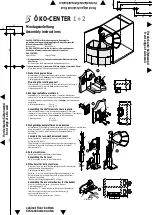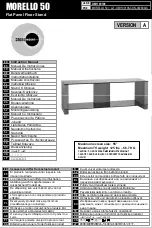
Commissioning
CCS120
16
Hauser
6
Commissioning
!
Note!
• Read also the instructions for operation and commissioning in the operating instructions of the
transmitter.
• The power supply to the transmitter and to the sensor must not be interrupted. If the power
supply is interrupted (> 2 hours) the sensor must be re-commissioned (polarisation time).
• Do not switch off the measuring device during intermittent operation. Dosing devices may be
controlled by timer switches.
However, if no disinfectant is metered over a longer period of time (weeks), the sensor must
be disconnected from the system and stored dry.
• Once the sensor has been commissioned it must be kept permanently wet.
6.1
Function check
Before first commissioning, check if:
• the sensor ist correctly installed
• the electrical connection is correct.
6.2
Polarisation
The voltage applied between cathode and anode by the transmitter polarises the surface of the
working electrode. Therefore, after switching on the transmitter with connected sensor, you
have to wait until the polarisation period has elapsed before you can start a calibration.
In order to achieve a stable display value the sensor needs the following polarisation period:
6.3
Calibration
Reference measurement according to the DPD method
The calibration of the measuring system requires a colormetric reference measurement
according to the DPD method. Chlorine reacts with diethyl-p-phenylenadiamine (DPD) by
producing a red dye, the intensity of the red colour being proportional to the chlorine
concentration.
The intensity of the red dye is measured by a photometer (e.g. CCM182, see accessories) and
displayed as chlorine concentration.
First commissioning:
24 h
After changing membrane:
1 - 6 h
Re-commissioning:
approx. 4 - 24 h












































